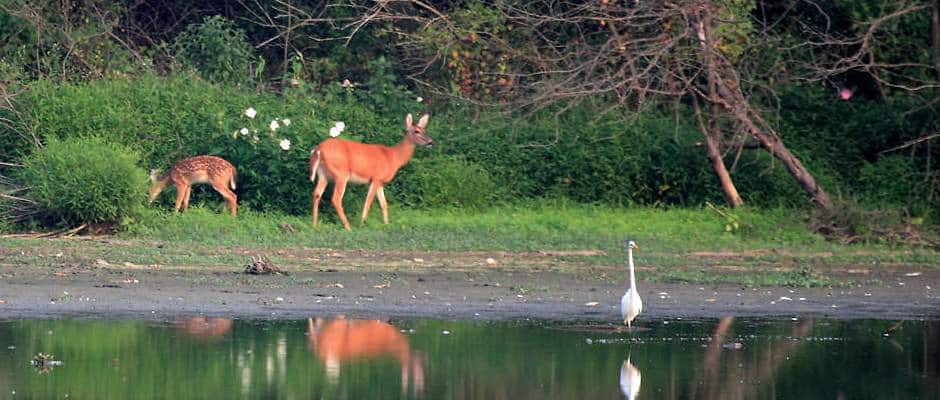Share this article
Leaders Need Public Support to Track CWD
Chronic wasting disease (CWD) is nearly impossible to kill in the deer that are affected by it. But government agencies in some regions of North America are fighting a battle of public perception in their very ability to track the disease.
“It’s been accepted that eradication is difficult, if not impossible,” said Katherine Mehl, an ecologist with the fish and wildlife branch of the Saskatchewan Ministry of Environment. Mehl is responsible for a CWD program that no longer exists. The government of Saskatchewan stopped their surveillance program in the fall of 2013 due in large part to a lack of participation from Saskatchewan hunters, who were asked to turn in deer heads for sampling and testing. “The sample sizes were declining. Overall it started off with quite a few samples,” she said.
CWD is sometimes referred to as a prion disease, which would put it in the same category as the mad cow disease (bovine spongiform encephalopathy) and scrapie. Prion diseases act more like infectious proteins than other disease transmitters like viruses, fungi or bacteria. Prions mostly affect the brain and are almost always fatal in mammals. The disease is currently known to affect members of the deer family like elk (Cervus canadensis), mule deer (Odocoileus hemionus), moose (Alces alces) and white-tailed deer (Odocoileus virginianus).
Mehl said that the program she worked on also attempted to reduce the spread of infection by reducing concentrations of wild deer. They offered more hunting licenses under certain conditions and in certain areas where the disease was known to be prevalent on the conditions that hunters sent them deer heads to test for CWD. But they received less than a 100 heads from key areas.
“Based on the modeling it has the potential to affect populations,” Mehl said of CWD. “It is a disease that could have some importance to the wildlife.”
Despite the fact that the effort was made to protect deer populations from the spread of the fatal disease, the thinning of deer populations in the province conflicted with other stakeholders and contributed to the lack of public support for the project, Mehl said. She’s had some indication that this support is starting to increase and said public backing is necessary as the program to track and monitor the disease is very expensive and difficult to maintain otherwise.
Some researchers theorize that the disease was first created when captive deer were housed in a research facility at the University of Colorado in Fort Collins next to populations of sheep infected with scrapie in the late 1960s. The CWD prions are particularly hard to kill, as even burning the proteins doesn’t appear effective. “This is resilient beyond anything we’ve pretty much seen,” said Darrel Rowledge, an advocate with Alliance for Public Wildlife, a non-profit organization that focuses on preserving and promoting the North American model of wildlife conservation.
CWD has also become a political flashpoint between operators of private deer farms and wildlife and hunting advocates against the establishments. Rowledge blames commercial deer farms for the proliferation of the disease and believes that governments like Saskatchewan are making a dangerous gamble in stopping their monitoring program.
“We now have thousands of infected deer being consumed by people every year and we’re soon on our way to tens of thousands if we don’t deal with this,” he said.
But the deer farm operators and other stakeholders point out that there is no proof that to show that CWD is dangerous for humans. The Centers for Disease Control and Prevention’s website on the prion disease said that there has been no “strong evidence of CWD transmission to humans” reported, but they continue to monitor the disease.
“Specific studies have begun that focus on identifying human prion disease in a population that is at increased risk for exposure to potentially CWD-infected deer or elk meat,” their website said. “Because of the long time between exposure to CWD and the development of disease, many years of continued follow-up are required to be able to say what the risk, if any, of CWD is to humans.”
John Fischer, the director of the Southeastern Cooperative Wildlife Disease Study housed at the University of Georgia, said that the disease should be tracked regardless. “It’s a work in progress where we continue to learn things about the disease and that will help us control the disease.”
He said this was made more difficult in the U.S. when the federal Department of Agriculture stopped helping states fund tracking operations, but he believes testing should continue as CWD is “a very significant disease” that needs to be monitored.
“Just because something doesn’t appear real fruitful immediately doesn’t mean that you stop,” he said. “Responsible wildlife managers would not be inclined to let a poorly understand disease spread throughout their wildlife.”
Header Image: Image Credit: Ron Holmes, USFWS








